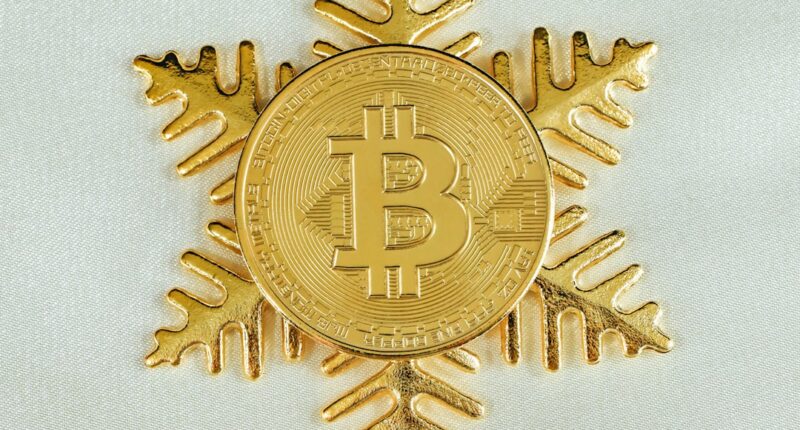Ethereum, the second-largest cryptocurrency by market capitalization, has been making headlines recently due to its upcoming upgrade, Ethereum 2.0. This upgrade aims to improve the scalability, security, and sustainability of the Ethereum network by transitioning from a proof-of-work (PoW) to a proof-of-stake (PoS) consensus mechanism. This shift is expected to make the network more energy-efficient and reduce transaction fees, ultimately making it more accessible to a wider range of users. Additionally, Ethereum has been gaining traction in the decentralized finance (DeFi) space, with a surge in the number of decentralized applications (dApps) being built on its platform. This has led to increased transaction volumes and a growing ecosystem of financial products and services. Furthermore, the recent announcement of the Ethereum Improvement Proposal (EIP) 1559 has sparked discussions within the community, as it proposes a new fee structure that could potentially make Ethereum a deflationary asset.
On the regulatory front, Ethereum has been facing scrutiny from government agencies, particularly in the United States. The Securities and Exchange Commission (SEC) has been closely monitoring the cryptocurrency space and has yet to provide clarity on whether Ethereum should be classified as a security. This lack of regulatory clarity has created uncertainty for investors and developers alike. However, despite these challenges, Ethereum continues to be a dominant force in the cryptocurrency market, with a strong community and a track record of innovation. As the network prepares for its next major upgrade, all eyes are on Ethereum to see how it will shape the future of blockchain technology.
Key Takeaways
- Ethereum’s latest news includes the upcoming upgrade to Ethereum 2.0, which aims to improve scalability and security.
- Ethereum and Cardano both have potential for smart contract applications and decentralized finance (DeFi) platforms.
- Ethereum has seen a significant rise in the cryptocurrency market, becoming the second-largest cryptocurrency by market capitalization.
- When comparing Ethereum and Cardano as investments, factors such as technology, adoption, and development roadmap should be considered.
- The future potential of Ethereum and Cardano lies in their ability to address scalability, interoperability, and sustainability in the blockchain space.
Exploring the Potential of Ethereum and Cardano
Ethereum and Cardano are two prominent players in the blockchain and cryptocurrency space, each with its own unique features and potential. Ethereum, often referred to as the “world computer,” is known for its smart contract functionality and robust ecosystem of dApps. Its upcoming upgrade to Ethereum 2.0 is expected to address some of the network’s scalability and sustainability issues, positioning it for further growth and adoption. On the other hand, Cardano prides itself on its scientific approach to development and aims to provide a more secure and scalable infrastructure for the future of finance. With its focus on peer-reviewed research and formal verification methods, Cardano has garnered attention for its potential to offer a more secure and sustainable alternative to existing blockchain platforms.
Both Ethereum and Cardano have been actively involved in the DeFi space, with Ethereum leading the way in terms of adoption and transaction volume. However, Cardano’s recent launch of its smart contract functionality through the Alonzo upgrade has positioned it to compete more directly with Ethereum in the dApp ecosystem. As these two platforms continue to evolve and innovate, it will be interesting to see how they differentiate themselves and capture market share in the rapidly growing blockchain industry.
The Rise of Ethereum in the Cryptocurrency Market
Ethereum has experienced significant growth since its inception in 2015, becoming one of the most widely used and recognized cryptocurrencies in the world. Its smart contract functionality has enabled the creation of a wide range of decentralized applications, including DeFi platforms, non-fungible token (NFT) marketplaces, and decentralized exchanges. This has led to a surge in transaction volume on the Ethereum network, driving up demand for its native cryptocurrency, Ether (ETH). Additionally, Ethereum’s upcoming transition to a PoS consensus mechanism with Ethereum 2.0 has generated excitement within the community, as it promises to address some of the network’s scalability and sustainability challenges.
Furthermore, Ethereum’s role in shaping the future of finance through DeFi cannot be understated. The total value locked (TVL) in DeFi protocols built on Ethereum has surpassed $100 billion, highlighting the significant amount of capital that is being deployed within the ecosystem. This has led to increased interest from institutional investors and traditional financial institutions looking to participate in the DeFi space. As Ethereum continues to solidify its position as a leading blockchain platform, its impact on the broader cryptocurrency market is undeniable.
Comparing Ethereum and Cardano: Which Is the Better Investment?
| Metrics | Ethereum | Cardano |
|---|---|---|
| Market Cap | XXX billion | XXX billion |
| Price | XXX | XXX |
| Transaction Speed | XXX transactions per second | XXX transactions per second |
| Smart Contract Functionality | Yes | Yes |
| Development Team | XXX developers | XXX developers |
When comparing Ethereum and Cardano as potential investments, it’s important to consider their respective strengths and weaknesses. Ethereum’s established track record, large developer community, and extensive ecosystem of dApps make it a compelling investment option. Its upcoming upgrade to Ethereum 2.0 is expected to address some of its scalability issues and improve its long-term sustainability. Additionally, Ethereum’s dominance in the DeFi space and its potential to capture a larger share of the global financial market further solidify its position as a strong investment opportunity.
On the other hand, Cardano’s scientific approach to development and focus on security and scalability make it an attractive investment option as well. The recent launch of smart contract functionality through the Alonzo upgrade has positioned Cardano to compete more directly with Ethereum in the dApp ecosystem. Furthermore, Cardano’s emphasis on formal verification methods and peer-reviewed research sets it apart as a platform that prioritizes security and reliability.
Ultimately, both Ethereum and Cardano have their own unique value propositions and potential for growth. While Ethereum may offer more immediate opportunities due to its established presence in the market, Cardano’s innovative approach and long-term vision make it an intriguing investment option for those looking to capitalize on the future of blockchain technology.
Unlocking the Future Potential of Ethereum and Cardano
As Ethereum and Cardano continue to evolve and innovate, their future potential remains promising. With Ethereum 2.0 on the horizon, the network is poised to address some of its scalability and sustainability challenges, making it more accessible to a wider range of users. This could lead to increased adoption of decentralized applications and further growth in the DeFi space. Additionally, Ethereum’s role in shaping the future of finance through DeFi cannot be understated, as it continues to attract significant capital from institutional investors and traditional financial institutions.
Similarly, Cardano’s focus on security and scalability positions it as a strong contender in the blockchain space. The recent launch of smart contract functionality through the Alonzo upgrade has opened up new opportunities for developers to build decentralized applications on the platform. As Cardano continues to expand its ecosystem and attract new users, its potential for growth in the long term is evident.
Overall, both Ethereum and Cardano have significant potential to shape the future of blockchain technology and finance. Their respective strengths and unique features make them compelling options for investors looking to capitalize on the growing cryptocurrency market.
Analyzing the 23M Series Elkowitz Decrypt in Relation to Ethereum and Cardano

The 23M Series Elkowitz Decrypt is an important event that has sparked discussions within the cryptocurrency community regarding its potential impact on Ethereum and Cardano. This event aims to bring together industry leaders, developers, and enthusiasts to discuss the latest trends and developments in blockchain technology. As such, it presents an opportunity for both Ethereum and Cardano to showcase their respective strengths and innovations.
For Ethereum, this event provides a platform to highlight its upcoming upgrade to Ethereum 2.0 and its impact on scalability, security, and sustainability. It also allows Ethereum developers to showcase new dApps and DeFi protocols that are being built on the platform, further solidifying its position as a leading blockchain platform.
Similarly, for Cardano, the 23M Series Elkowitz Decrypt presents an opportunity to showcase its scientific approach to development and its recent launch of smart contract functionality through the Alonzo upgrade. It provides a platform for Cardano developers to demonstrate their innovative solutions and highlight the platform’s potential for growth in the decentralized application ecosystem.
Overall, the 23M Series Elkowitz Decrypt serves as a catalyst for both Ethereum and Cardano to engage with industry stakeholders and demonstrate their respective contributions to the future of blockchain technology.
The Role of Ethereum and Cardano in the Future of Blockchain Technology
Ethereum and Cardano are poised to play significant roles in shaping the future of blockchain technology. With their respective strengths and unique features, they have the potential to drive innovation and adoption in various sectors beyond finance.
In addition to their impact on DeFi, both platforms have applications in areas such as supply chain management, healthcare, gaming, and identity verification. As they continue to evolve and address scalability challenges, they are likely to attract more developers and users looking to build decentralized applications that can revolutionize these industries.
Furthermore, as regulatory clarity improves and institutional adoption increases, both Ethereum and Cardano are expected to play pivotal roles in mainstreaming blockchain technology. Their ability to provide secure, scalable, and sustainable infrastructure will be crucial in enabling widespread adoption across different sectors.
In conclusion, Ethereum and Cardano are at the forefront of driving innovation in blockchain technology. Their potential impact extends beyond finance into various industries where decentralized applications can revolutionize existing systems. As they continue to evolve and address scalability challenges, their role in shaping the future of blockchain technology is undeniable.
Sure, here’s a paragraph that includes a related article to Ethereum and Cardano:
If you’re interested in learning more about the latest developments in the world of cryptocurrency, you might want to check out the article “Hello World: Exploring the Future of Ethereum” on eth-news.com. This insightful piece delves into the potential impact of Ethereum’s latest upgrades and its competition with Cardano in the ever-evolving landscape of blockchain technology. For a deeper understanding of these topics, be sure to give it a read!
FAQs
What is Ethereum?
Ethereum is a decentralized platform that enables developers to build and deploy smart contracts and decentralized applications (DApps). It is powered by its native cryptocurrency, Ether (ETH).
What is Cardano?
Cardano is a blockchain platform that aims to provide a more secure and scalable infrastructure for the development and execution of smart contracts and DApps. It is powered by its native cryptocurrency, ADA.
What is the 23m series Elkowitz Decrypt?
The 23m series Elkowitz Decrypt is not a widely recognized term in the context of Ethereum and Cardano. It is possible that it refers to a specific project, development, or analysis related to these blockchain platforms.
What are the key differences between Ethereum and Cardano?
One key difference between Ethereum and Cardano is their consensus mechanisms. Ethereum currently uses a proof-of-work (PoW) consensus algorithm, while Cardano uses a proof-of-stake (PoS) algorithm. Additionally, Cardano aims to address scalability and sustainability issues that have been associated with Ethereum.
How can I invest in Ethereum and Cardano?
Investing in Ethereum and Cardano can be done through various cryptocurrency exchanges and trading platforms. It is important to conduct thorough research and consider the associated risks before investing in any cryptocurrency.





